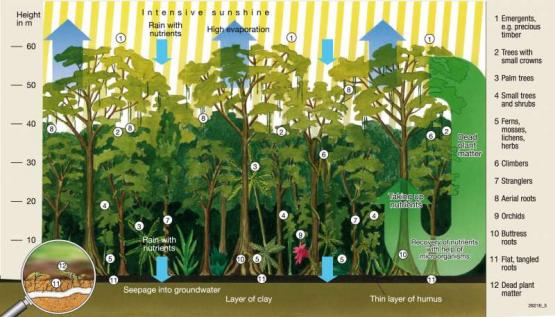
Waste Management
11 min read
By Mark Garrett
From the start of this series, I have discussed how permaculture is all about using nature as our guide in order to design sustainable living systems for food production or energy supplies for daily living. If you watch nature closely, you will notice that in nature there is no waste. Instead, all the by-products of individual systems cascade down to support another system, and so on, right down to the bottom which them loops back up to feed the top. This is what we call a closed loop nutrient cycle, sort of the holy grail of permaculture since nothing ends it simply has a new beginning. As permaculturists, then, this is the sort of environment (or system) that we want to create.
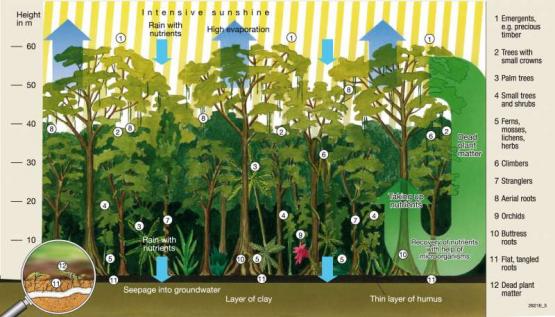
To understand the importance of closed loops, consider one of the greatest challenges of our time: global warming.
Global warming is a direct result of greenhouse gas emissions, including Carbon Dioxide (CO2), Methane (CH4), Nitrogen Oxides (NOx) and Fluorinated Gases. These gases blanket the earth, allowing the atmosphere to trap heat from the sun ‘inside’ the blanket, thereby warming up the earth and its climate.
This is known as the greenhouse effect, since the gasses in the atmosphere act like a greenhouse: allowing light and heat from the sun to enter and warm, while slowing the escape of the radiation back out into space. The more greenhouse gases we add, the more we thicken the glass of our greenhouse and the less radiation is able to escape. By trapping more and more heat inside, we are radically changing our fragile atmosphere.
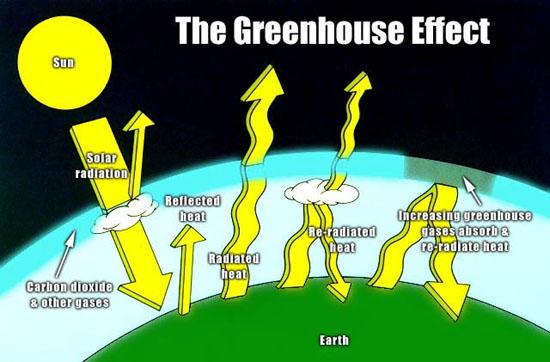
These gases are by-products of the industrial revolution powered by cheap fossil fuels that, when burnt, release the harmful gasses into the atmosphere. Given modern society we are lead to believe that we cannot do with out these fossil fuels, which is utter nonsense.
The use of these fossil fuels has increased exponentially as our global population has exploded from about 1 billion, a hundred years ago, to over 7 billion today, fuelled in part by the ready access to these same fossil fuels!
We have achieved many wonders thanks to the wonders of these fossil fuels that would not have been thought possible 100 years ago, including transport systems on land air and space, building materials, packaging supplies… stuff, entirely made out of inorganic substances, which will last virtually forever.
Nature has designed systems to handle these gases but the rapid expansion of population and demand for stuff, has lead to the system, the natural carbon cycle, struggling to maintain a functioning global temperature.
We now have to solve this problem by mimicking nature: by being non-polluting and non-exploiting of the environment. We have been at the tipping point for far too long and Mother Nature needs our help.
As mentioned in a previous blog, we are losing agricultural land 40 times greater than we can replace it, while environmental and nutritional diseases are on the increase. The cost to repair this damage is calculated to be in the billions. The question is what to do now?
For every problem there is a solution, so the answer is to break the vicious cycle of waste production and turn it on its head by creating one of nature’s loops so that waste turns into wealth. By using nature’s blueprint, we can close the loop on both organic and inorganic waste. This combined with alternative, renewable energy supplies that will help decrease our societal dependence on fossil fuels, will mean lower greenhouse gas emissions, and a thinning of our greenhouse roof!
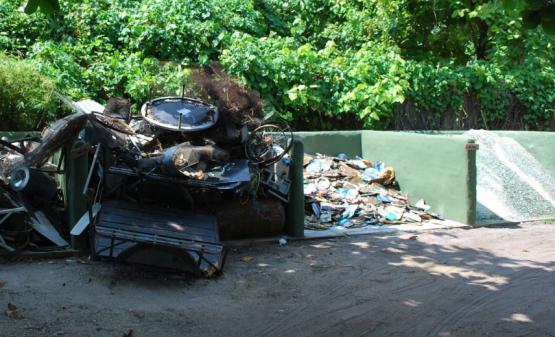
The first step is to shift your way of thinking about waste. Rather than thinking about it as something that must be discarded, think of it instead as wealth that has not yet been realized, after all, as they say, ‘one man’s trash is another man’s treasure”… It is not simply about the three Rs – reducing, recycling and reusing – it is also about adding a fourth – re-educating, since a paradigm shift in our initial approach to the problem is paramount since it will define the rest of the actions we take.
Take, for example, what you eat, what you wear, where you work, where you live… in fact, everything you do. It all generates waste streams. Say we have an organic vineyard or restaurant or a vegetable garden in our city allotment, waste is generated. This waste then has two possible futures: either it becomes part of the problem by contributing to the global warming through the gases it gives off as it decomposes in the rubbish, or we can choose to close the loop by putting in place a system that finds a use for the waste. It is possible, for instance, to design systems, both big and small that generate power and lock in carbon to reduce the emissions of these essential gasses.
Second step: take stock of what you use and assess what “wealth” is the by-product of your daily living. By this I mean, consider everything, from the toothpaste you use to the hose fittings you were planning to replace in your garden. Collect together all this “wealth” for a week then tip it out and see what you have. (This will help with your re-education process).
In my experience we all produce roughly the same waste, just in differing amounts. Broadly speaking, we all need to eat and the majority of us buy all of our food from supermarkets, which means packaging, differing grades of plastic, glass, various metals, paper, cardboard and polystyrene. Then we have the food itself, inside the manmade packaging. Some of these foods will come packaged by nature too, with skins or sheaths of leaves or casings which are themselves also part of your newfound “wealth”. Finally, there’s the part that we eat, which in many instances is only a fraction of what we bought in the first place since an inordinate amount of what we buy is actually thrown away rather than eaten either because it passes its best before date, or because we cooked too much for leftovers or because we forgot about the carrots at the back of the fridge drawer that are now a little floppy and less appetising.
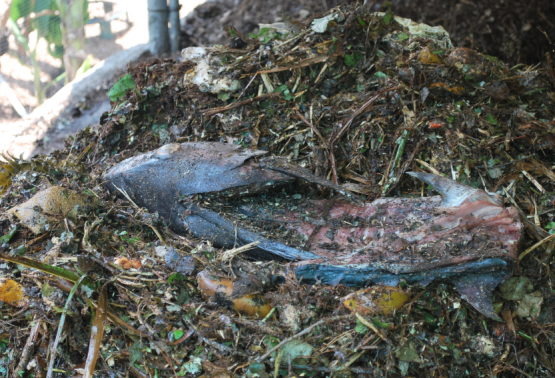
Third step: categorise the waste into organic and inorganic elements, which means either into stuff you can recycle or stuff you can reuse.
In Bali, for example, we designed an “Organic Wealth Centre” and a Recycling Depot on the site of a hotel. This meant that we were able to process all food “wealth”, and other organic matter, for use in the vegetable garden, which in turn supplied the hotel restaurant, while collecting together all other recyclables, including glass, metals and plastic, which could then be sold off.
By setting up these systems to utilize the “wealth” streams, we created a closed loop system that mimicked nature and benefited her at the same time. By producing our own organic produce we were also cutting down on transport costs and packaging, especially since all the food that then needed to be packaged was wrapped in either paper, banana or other large leaves which could then be returned to the cycle, either as mulch compost or liquid fertilizer. Problem solved.
Had we not implemented this system on Bali, and given there were no other effective recycling centres on the island, then all this “wealth” would have literally gone up in smoke, adding to the greenhouse gasses, and generally worsening rather than alleviating the problem.
Bali is not unique, I have designed lots of similar systems around the world. The Maldives also had no true waste management programme, so my work at Soneva Fushi focused on creating systems to again turn our substantial island waste into island wealth. So, go out and create your own depot or wealth centre at home in your apartment and be part of the solution!
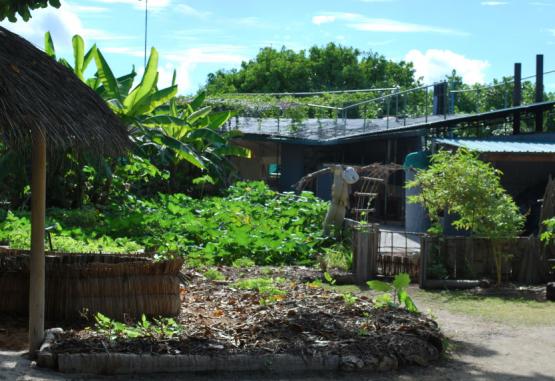
Forth step: explore the various “wealth” creators in your life so that you understand how often you use these wealth-generating things and how efficient or inefficient they really are. This will then give you an idea of what you can reduce. For example, when I started travelling the world working as a permaculturist, I realized that shaving with a disposable razor every day was utter madness – for starters, planes are not so keen on them in hand luggage, and for seconds, how was I to dispose of them when living in remote island locations? I could have grown a beard but that is not really my thing so instead I now use a safety razor, which takes individual blades. I use 12 blades a year, which take up the space of matchbox and when a blade is blunt it goes back into the packaging, like that when I get to a country where they recycle metal I can then offload the blades. Imagine if more of us made decisions as simple as these. Imagine how much plastic would be avoided in landfills or would be burnt up in greenhouse gasses…
Putting it into practice
A great example of the four Rs – rethinking, reducing, recycling and reusing – albeit on a pretty large scale, is the bamboo factory in Bali that I was involved in. The ‘problem’ was that the bamboo factory generated large amounts of off-cuts. These were burnt as part of the treatment process, giving off greenhouse gasses and wasting a valuable supply of biomass. We needed to close the loop. The solution? We built an Adams Retort for making charcoal. The retort reuses the greenhouse gases given off when wood is dried during stage 1 of the charcoal making process. These gases are then ignited in the stage 2 during pyroloysis, to generate heat thanks to which the wood is carbonized, becoming charcoal.
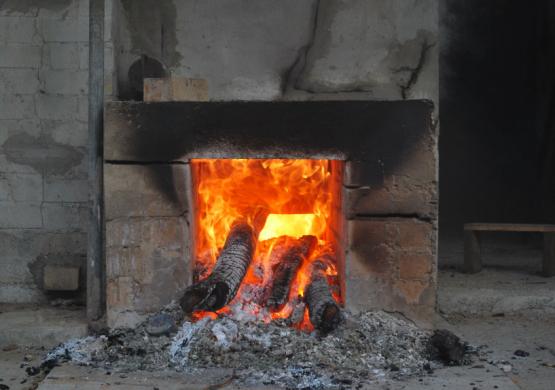
The result was that we were using around 125 kgs of scrap wood to produce some 400 kgs of charcoal, which meant that all the greenhouse gases were now being used to create the charcoal rather than being released into the atmosphere. (This is notable not least because in traditional charcoal making methods, you burn as much wood as you make charcoal, while also releasing lots of CO2, thereby contributing substantially to global warming).
The charcoal could then be crushed and mixed with composts or manure to become biochar, an excellent soil conditioner which has been found to even have been used in the Mayan period, and is seen as a solution to sequestering carbon in our agricultural waste lands. In the Growing Soil blog, for instance, I discussed how we used it in our compost mixes in the Maldives for exactly this reason. Similarly, in Bali, we mixed it with chicken poo and used in the garden beds. Indeed, test beds that we set up to monitor the effect, clearly demonstrated that the beds rich in crushed charcoal + chook poo sported greater growth rates in soya beans than those where none was used.
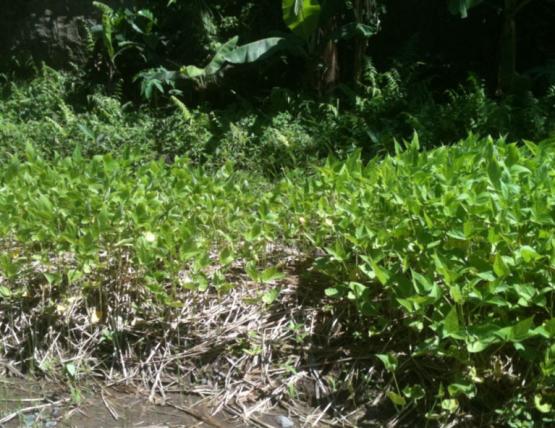
This solution addresses five Permaculture principles:
- Relative location of elements placed to assist each other
- Retort at Bamboo factory to make charcoal for treatment process from waste on site
- Each element performs many functions at least 3
- A heat exchanger on the retort will capture energy
- The charcoal by-product could then be used for
- Heating
- Cooking
- Deodorizing
- Humidifying
- Or it could be turned into biochar, and used as a fertilizer for increased food production.
- Efficient energy planning (zones and sectors)
- The Retort was built near an abundant supply of bamboo, and in an area that was neither labour intensive nor needed for other factory operations required on a daily basis.
- Emphasis on use of biological resources over fossil fuels
- Bamboo and greenhouse gases used to produce charcoal.
- Energy recycling on site (fuel and human)
- The Retort reused a renewable fuel (Bamboo), turning it into another fuel charcoal, without any emissions.
Problem solved!
A final thought
Throughout this series of blogs, we have looked at how nature has designed efficient waste to wealth systems that cascade down through the web of life from top predator to the smallest bacteria imaginable. These intricate systems allow the earth to breath, water to flow and temperatures to regulate themselves so that conditions are just right, albeit fragile, for sustaining life on this tiny rock flying through space.
Over the last 100 years, and more specifically over the last 50, we have disregarded nature’s way, and have worked hard to work against her, rather than with her, to create a world of excess full of things we really could do without. The result is that our existence is under threat, and this is largely due to the burning of fossil fuels at an alarming rate.
If we can reduce our greenhouse gas emissions by processing our wealth in ways like those I discussed above, which are but a few of the panoply of solutions available to us, we can then support systems that retain water, gases, minerals and humus so that we can have clean air, clean water, healthy soil, healthy plants, healthy people and a generally healthy planet.
We can reverse this vicious cycle that we have gotten ourselves into. Let us all learn from the best teacher of all: nature. Permaculture gives us the framework to look for her answers and to work far more efficiently and productively alongside her, and at increased speed since we really don’t have time to waste.
Again I hate to harp on about how this can start to happen, but it will only happen once we start to thinklike permaculturists.
Make decisions at the checkout. Buy organic, not GMO or factory farmed meats, say no to a plastic bag, plastic bottle, plastic shaver, plastic whatever, and support your local community businesses. Use public transport where possible, walk a little more, separate your wealth at home and set your life up so that recycling and reusing comes easily. Turn the tap off when brushing your teeth. In terms of the John, remember: if it’s yellow, let it mellow and only flush it down, when it is brown. When living somewhere, check out which way your home faces and whether or not you can collect water off the roof, driveway, or even your neighbour’s house. The list goes on. It is all good. We just have to think a little about what we are doing to this planet and how we can help.
These are things we can all do. We don’t have to live on farms or out in the wild or grow all our own food or make our own wine. Leave that to those who really want to do it, but do support the ones who are doing it right. The more support we give them, the more support the government and policymakers will have to give as well.
There is not one permaculture, we all have our own. Find it, use it and the world will be a better place for it.
In fact, thinking about it, the very act of writing this very blog series must be permacultural in some way since I’ve certainly had fun writing it, and I hope you’ve had fun reading it. Stay in touch, as I would genuinely love to hear about your permaculture wherever you are.
You can get hold of me on Twitter (@MGpermaculture) or by email.
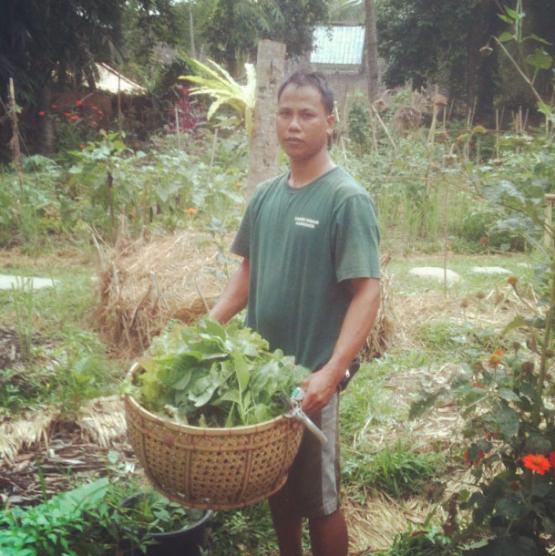
- For the publishing schedule of Mark’s blog series, see “Our Virtual Expert“
- To read blog 1 in Mark’s series, see “What is Permaculture?“
- To read blog 2 in Mark’s series, see “Permaculture Design“
- To read blog 3 in Mark’s series, see “Understanding Soil“
- To read blog 4 in Mark’s series, see “Growing Soil“
- To read blog 5 in Mark’s series, see “Water Harvesting“


